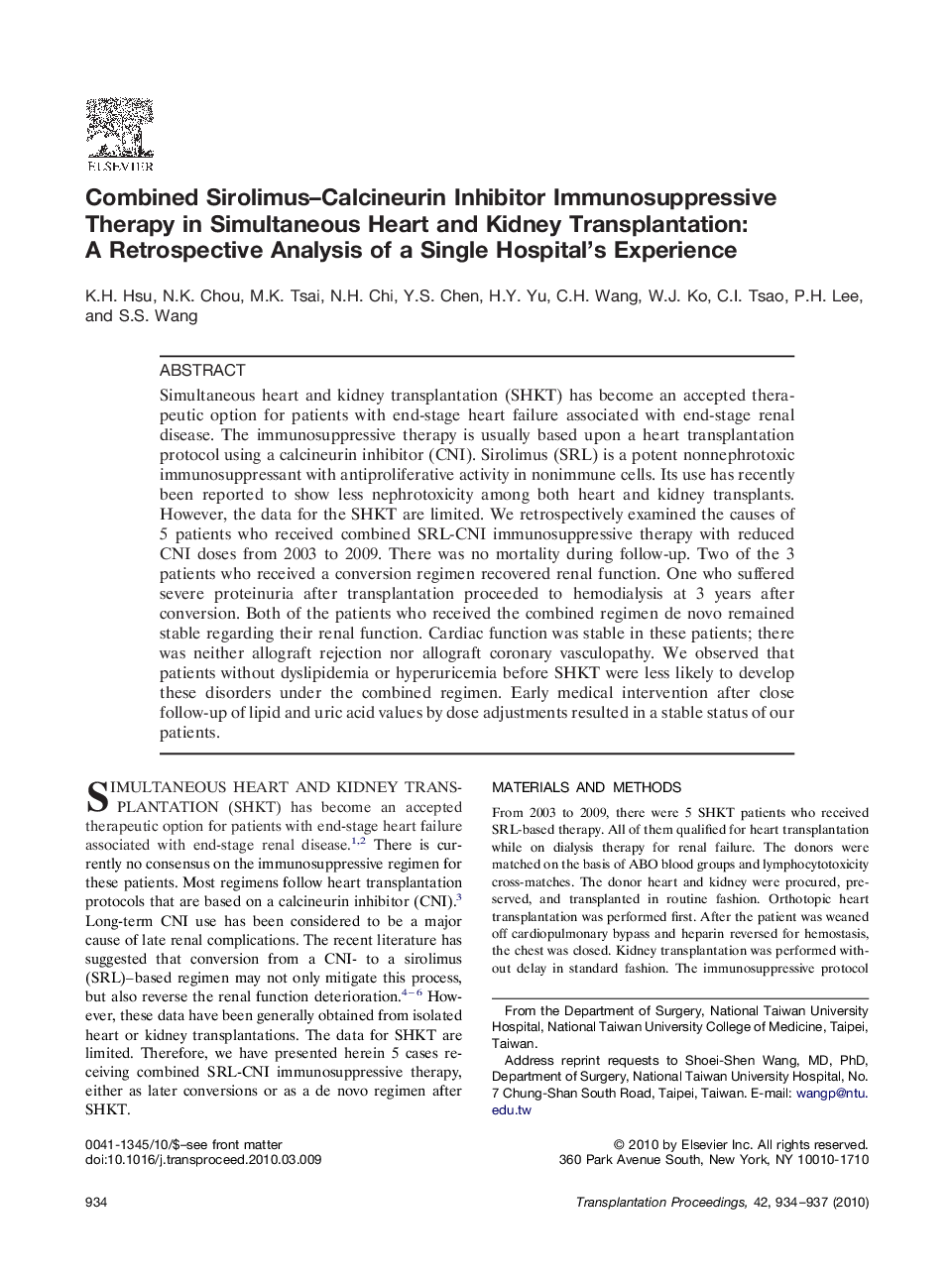| Article ID | Journal | Published Year | Pages | File Type |
|---|---|---|---|---|
| 4258167 | Transplantation Proceedings | 2010 | 4 Pages |
Abstract
Simultaneous heart and kidney transplantation (SHKT) has become an accepted therapeutic option for patients with end-stage heart failure associated with end-stage renal disease. The immunosuppressive therapy is usually based upon a heart transplantation protocol using a calcineurin inhibitor (CNI). Sirolimus (SRL) is a potent nonnephrotoxic immunosuppressant with antiproliferative activity in nonimmune cells. Its use has recently been reported to show less nephrotoxicity among both heart and kidney transplants. However, the data for the SHKT are limited. We retrospectively examined the causes of 5 patients who received combined SRL-CNI immunosuppressive therapy with reduced CNI doses from 2003 to 2009. There was no mortality during follow-up. Two of the 3 patients who received a conversion regimen recovered renal function. One who suffered severe proteinuria after transplantation proceeded to hemodialysis at 3 years after conversion. Both of the patients who received the combined regimen de novo remained stable regarding their renal function. Cardiac function was stable in these patients; there was neither allograft rejection nor allograft coronary vasculopathy. We observed that patients without dyslipidemia or hyperuricemia before SHKT were less likely to develop these disorders under the combined regimen. Early medical intervention after close follow-up of lipid and uric acid values by dose adjustments resulted in a stable status of our patients.
Related Topics
Health Sciences
Medicine and Dentistry
Surgery
Authors
K.H. Hsu, N.K. Chou, M.K. Tsai, N.H. Chi, Y.S. Chen, H.Y. Yu, C.H. Wang, W.J. Ko, C.I. Tsao, P.H. Lee, S.S. Wang,
